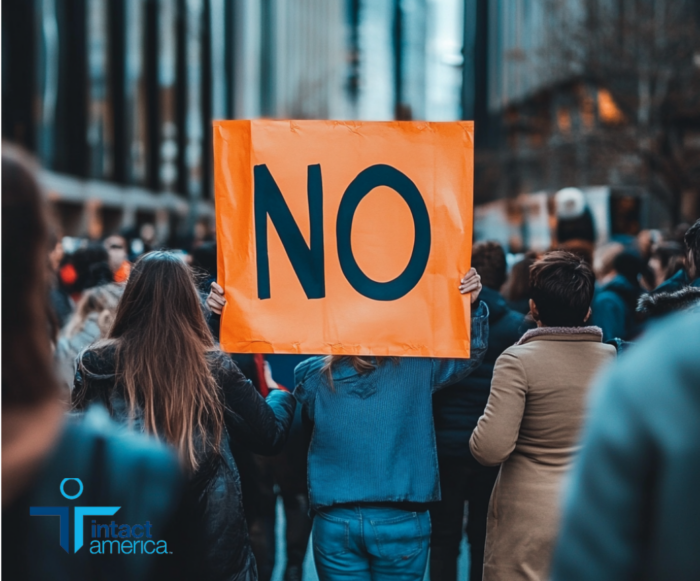Sandra Bullock’s appearance on TheEllenShow in May featured – as “comedy” – the loathsome facts about turning infant foreskins into expensive beauty products designed to make their consumers look more youthful.
This is the latest in a recurring story – which first emerged a few years ago when Oprah Winfrey pushed Skin Medica products also made from infant foreskins. This time, Intact America issued a press release, and Huffington Post published an article about the debacle. Hundreds of people wrote to TheEllenShow to protest, though more than one person felt it necessary to reminded us that “the baby was getting circumcised anyway, or “we shouldn’t forget that foreskin tissue is also used for good causes, like helping burn victims.”
This “good cause” argument doesn’t hold water; remember, stealing a wallet is illegal, even if you donate its contents to charity. Similarly, the baby’s foreskin is not yours to sell or give away.
The United Nations Global Initiative to Fight Human Trafficking lists three types of organ trafficking:
- First, cases where traffickers force or deceive the victims into giving up an organ.
- Second, cases where victims formally or informally agree to sell an organ, and are cheated by being paid less than the promised price, or being not paid at all.
- Third, vulnerable persons are treated for an ailment, which may or may not exist, and thereupon organs are removed without the victim’s knowledge.
The non-therapeutic circumcision of infants and children falls into the first and third categories of human organ trafficking.
The next time you hear somebody promoting a “foreskin facial,” be sure to remind that person that she or he is promoting a crime. Explain that because the foreskin was taken from a person who did not consent and who was not compensated (no matter how “small” and how “far away” that person was), he was a victim of human organ trafficking. Use it as an opportunity to promote “His Body, His Rights.”








